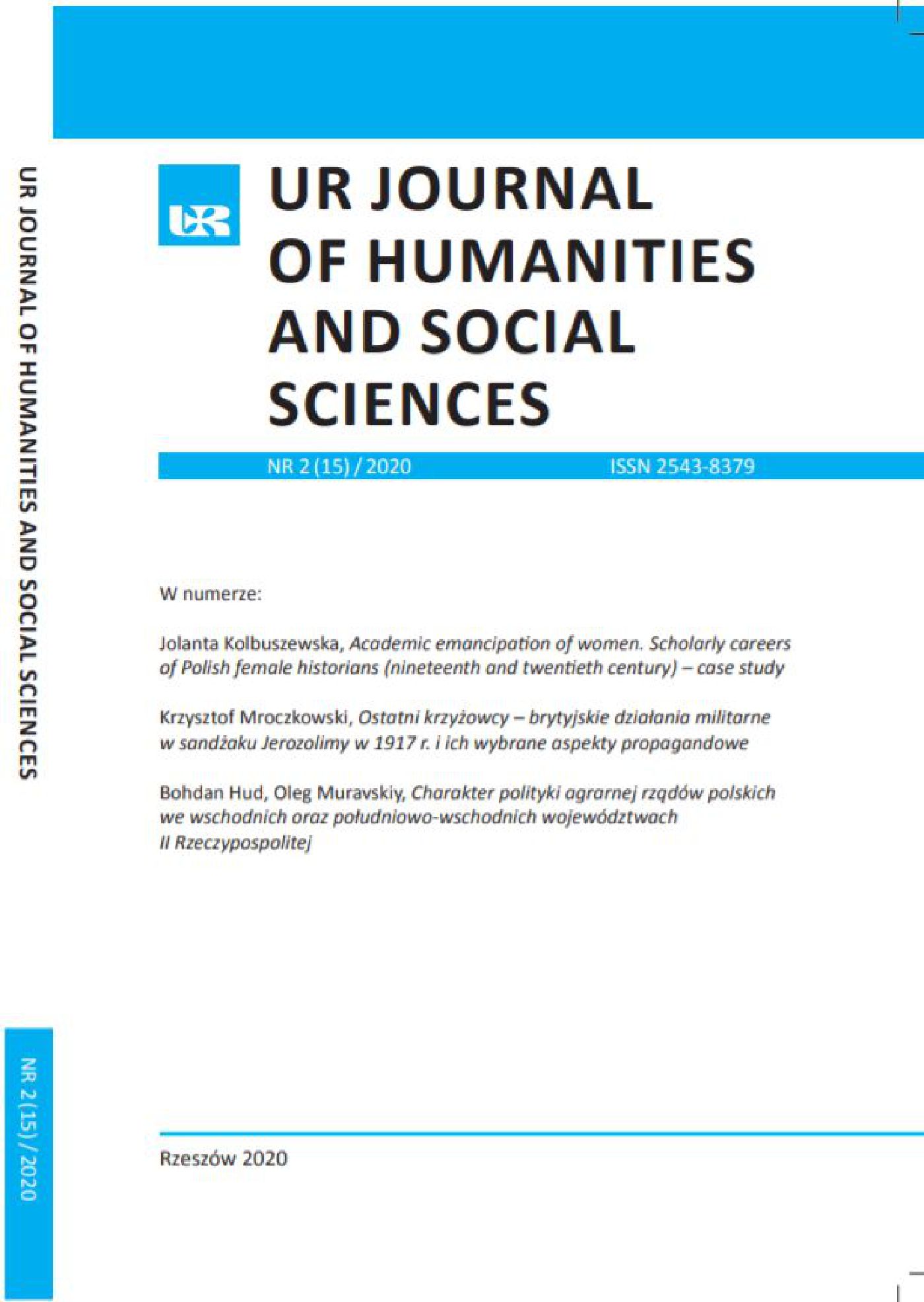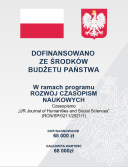The Last Crusaders – British military operations in the Jerusalem Sanjak in 1917 and selected aspects of propaganda
DOI:
https://doi.org/10.15584/johass.2020.2.5Keywords:
Propaganda, Crusades, Egyptian Expeditionary Force, Sir General Edmund, Allenby, Arab BureauAbstract
Today the Great War of 1914–1918 is seen – mainly – as a politically and militarily traumatic experience on a universal scale, which gave rise to great changes in the 20th century. Less often it is perceived as an individual, traumatizing or civic experience. We are not able - as confirmed not only by historians or sociologists but also psychologists – to "comprehend" the overall view of the reality of that time. We try to recreate it for better or worse based on various historical sources, and these largely reflected the personal attitude to events or its propaganda view. They were also prepared – in a larger or smaller way – by journalists, censors, politicians and military personnel. In the years preceding the outbreak of the Great War, many civilization achievements of the era were tested and introduced on a mass scale, such as modern media or fine arts in the services of power, nationalism skilfully controlled through the media. The turn of the twentieth century was an era of the mass press, and thus, faster transmission of transmitted information. This was conducive to the conduct of effective political propaganda – all the more necessary in the face of the Great War. It also took various forms. Often used were the explicitly associated symbols remaining at the interface between the military and religion. This became particularly evident during the Palestinian Campaign of Sir General Edmund Allenby.Downloads
Download data is not yet available.
Downloads
Published
2020-06-30
How to Cite
Mroczkowski, K. (2020). The Last Crusaders – British military operations in the Jerusalem Sanjak in 1917
and selected aspects of propaganda. Journal of Humanities and Social Sciences, 15(2), 70–90. https://doi.org/10.15584/johass.2020.2.5
Issue
Section
Articles
License
Copyright (c) 2020 Wydawnictwo Uniwersytetu Rzeszowskiego

This work is licensed under a Creative Commons Attribution-NonCommercial 4.0 International License.



